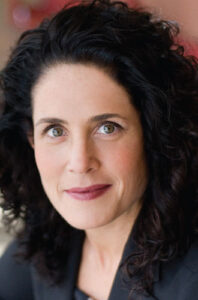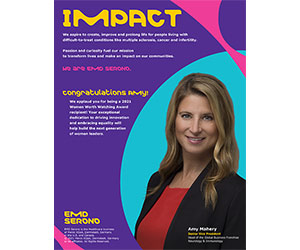By Melissa Lamson, Global Diversity Consultant

Since the end of Apartheid in 1994, in which the government used oppressive tactics towards black Africans in order to gain and maintain power in South Africa, it has been astounding that war hasn’t broken out. Perhaps because the majority population supports the African National Congress, or the ANC, who took over rule of the country and have been the strongest growing political body ever since. They are known in South Africa as the “black government rule” (contrary to the “white government rule”). The situation in South Africa is improving rapidly, the economy is growing, global investment is occurring both to and from South Africa, and the country has become a popular tourist destination.
South Africa isn’t entirely stable, though, as extreme poverty still exists and much of the country continues to be underdeveloped, with infrastructure challenges such as telecommunications and healthcare. However, urban economic centers like Cape Town and Johannesburg are flourishing and the conditions inside townships, where the majority of the black African communities live, have improved dramatically. For example, previously there was no running water or electricity at all, and today most of the townships have them both.
South Africa has eleven official languages and hundreds more spoken in the various communities around the country. There are equally as many ethnic groups, but essentially South Africa categorizes it’s population into white-non-Afrikaans (British descent), white-Afrikaans (Dutch descent), Malay or Indian, and black Africans, who make up the majority of the population, specifically the communities of Nguni and Sotho, who comprise 90 percent of the black community in South Africa. Africans from all over Africa come to South Africa for work opportunities, too.
Transformation and Reconciliation Today in South Africa
“Transformation” and “reconciliation” are two key words that guide the country’s growth and progress. The general public, business leaders, and politicians speak about transforming South Africa into an equitable, racially integrated, and thriving country where fair treatment for all peoples prevails. The term is associated with the political activist and first president after the end of Apartheid, Thabo Mbeki, while reconciliation is a term Nelson Mandela used, meaning forgiveness, cooperation, and moving forward as a peaceful nation. Both terms are regularly used by the people of South Africa, black or white, as optimistic mantras for moving the country forward in a positive manner.
It is not uncommon to hear conversations that openly discuss racism, oppression, and fairness in the South African society. Former Apartheid supporters have, in many cases, changed their attitudes towards black Africans and now promote creating a more integrated society. Many black Africans, in turn, see value in reconciliation for the economic and emotional benefit of all and anger is minimized on all sides.
But how does a society, which has suffered and wrestled with racism and oppression for so many years turn a new leaf? And how can global companies impact this change positively?
Social Change, Government, and Business

Melissa Lamson
Social change and governmental and business initiatives are intertwined in South Africa, and in many cases inseparable. A company, particularly a foreign subsidiary, needs to build relationships with government officials by showing its intent to support state initiatives. Leaders, in turn, need to consider how their business investment activity may impact the community in which it operates. In fact, a company may not only consider its activity, but needs, to actively create or support existing programs and initiatives that are benefiting the local population in some way.
For example, Forbes holds events around important African holidays. They have also sponsored community diversity trainings, which helped bridge cultural differences and minimize conflicts. Telekom established a mentorship program for eighteen months with local South African university students with the goal to create a pool of talent to hire from as they expand. They, too, also do diversity training in the workplace to promote understanding amongst their diverse workforce. SAP, the German software giant, has built computer learning labs to teach children in various small villages how to use computers and help them become more savvy in technology usage overall. SAP considers South Africa as a key growth market to the company’s expansion efforts and is included in SAP’s overall global diversity strategy.
Anti-Discrimination Law and the BEE
Racism and discrimination are not only discussed on the societal level, but people are open to discussing these important issues in the workplace—without sugar coating or avoiding them. Coming from another cultural context, particularly the North American or European business worlds, one might find it surprising and even shocking to sit in a business meeting in South Africa where both black and white people are openly conversing and strategizing around racism. However, South African business leaders consider the past experiences and future treatment of employees critical to building the pool of talent and require addressing this recent historical reality.
Anti-discrimination legislation is a driving factor meant to accelerate transformation in South Africa. Government and corporate policies support laws that create equal opportunities for what South Africa calls “Previously Disadvantaged Individuals.” These individuals include black women, men, and people of color. (In South Africa it isn’t uncommon to call those of mixed race “colored people,” and it isn’t considered offensive as it is in the United States.) Surprisingly, white women also didn’t have many rights under Apartheid but were “protected” by marriages to men who did.
The key to the anti-discrimination legislation is something called the BEE, or the Black Economic Empowerment charter. It is essentially a company scorecard, not dissimilar to an affirmative action plan, which requires that a certain percentage of minorities, including racial groups, women, and people with disabilities receive special attention and access to resources that were previously denied them. Additionally, shareholding capital within companies must be 25 percent black-owned. Currently supplier diversity programs are alive and growing.
Most business leaders take the BEE very seriously and buy in to the idea that its goal to equalize opportunities in the workplace is one of the only ways South Africa will ever truly thrive economically. Of course the situation is more complex than we’re able to portray here; white people in South Africa today do hold some resentment that now they may not get the job or opportunity they want. Aince the end of Apartheid many white people have left for England, Australia, or the United States in search of jobs or other opportunities.
On the whole South Africa is one of the next big growth markets for foreign investment. There is a high return on investment (ROI) due to less competition (not many multinationals are there yet), and it’s a market hungry for new products and services. For example, telecom companies in South African have added over 300 million subscribers over the last years. Since the World Cup in 2010, South Africa has seen a steady growth rate of about 5 percent.
South Africa, despite its ongoing issues, remains a dynamic center for diversity and new opportunity for economic growth.






